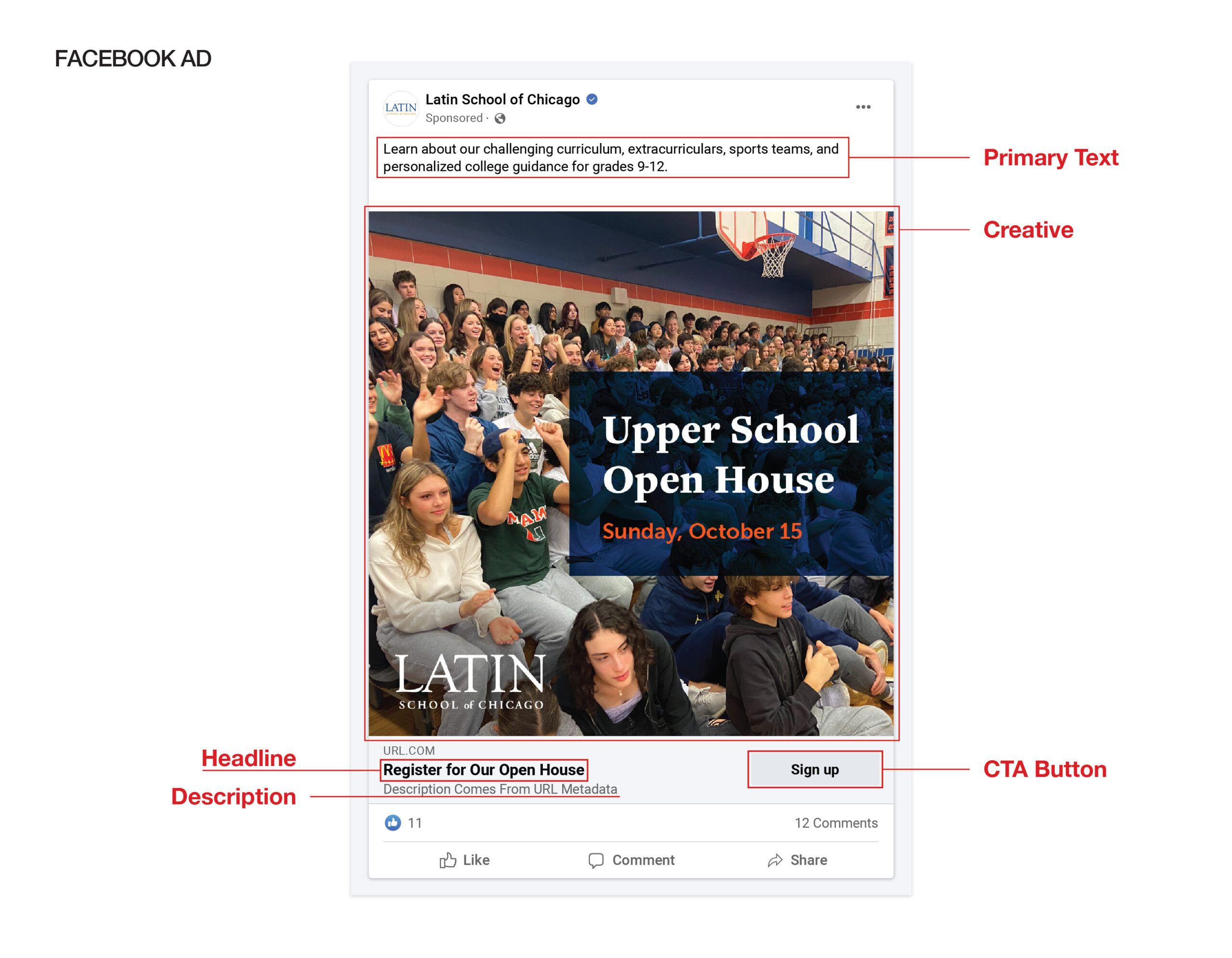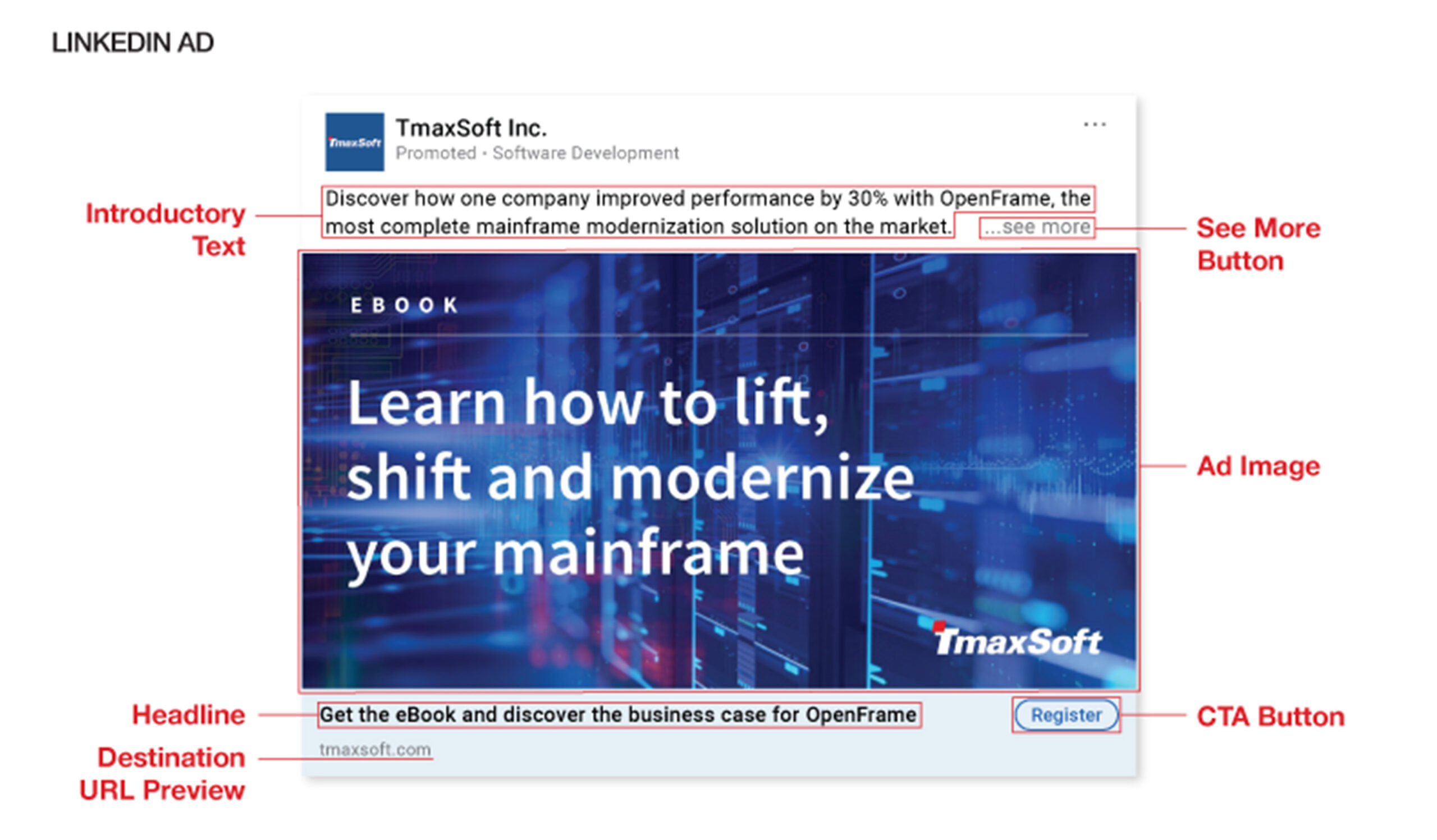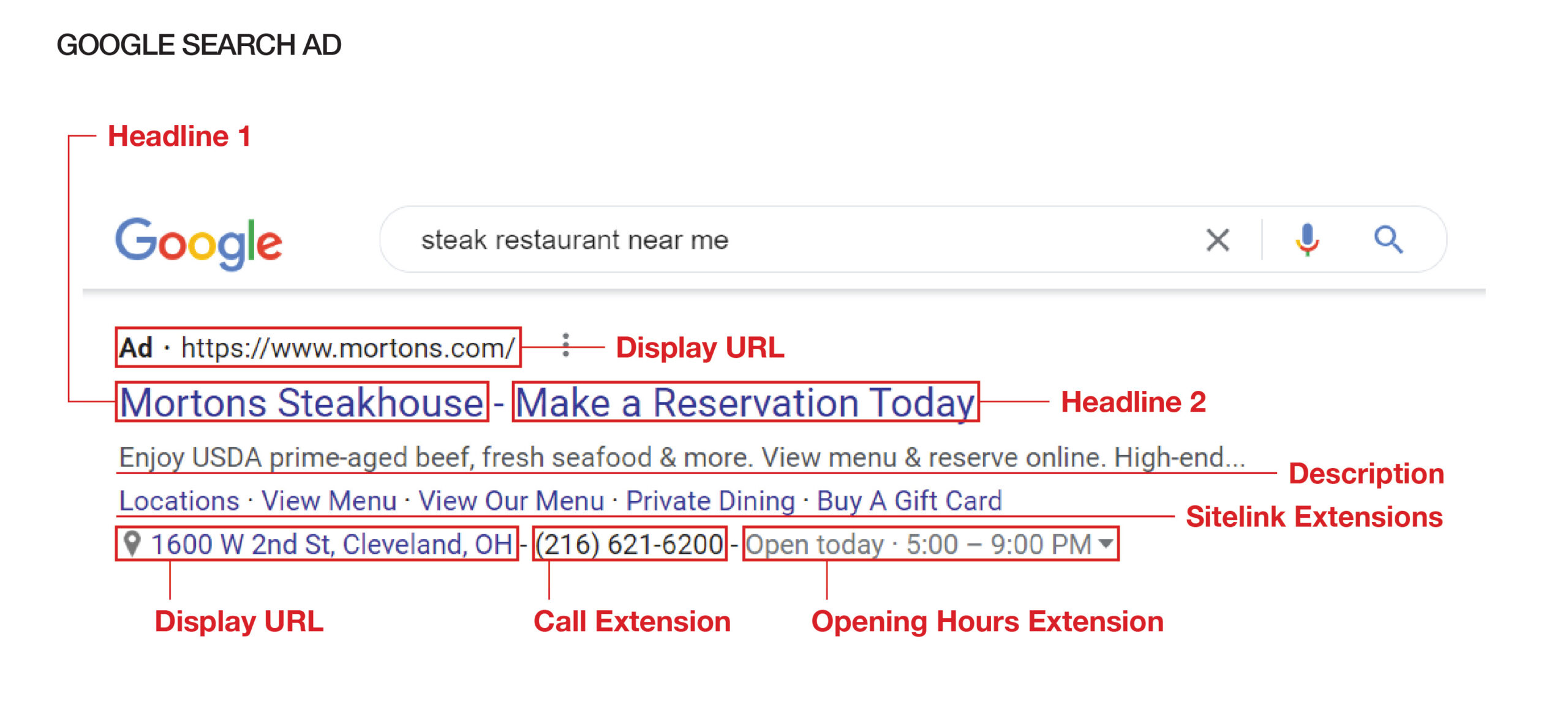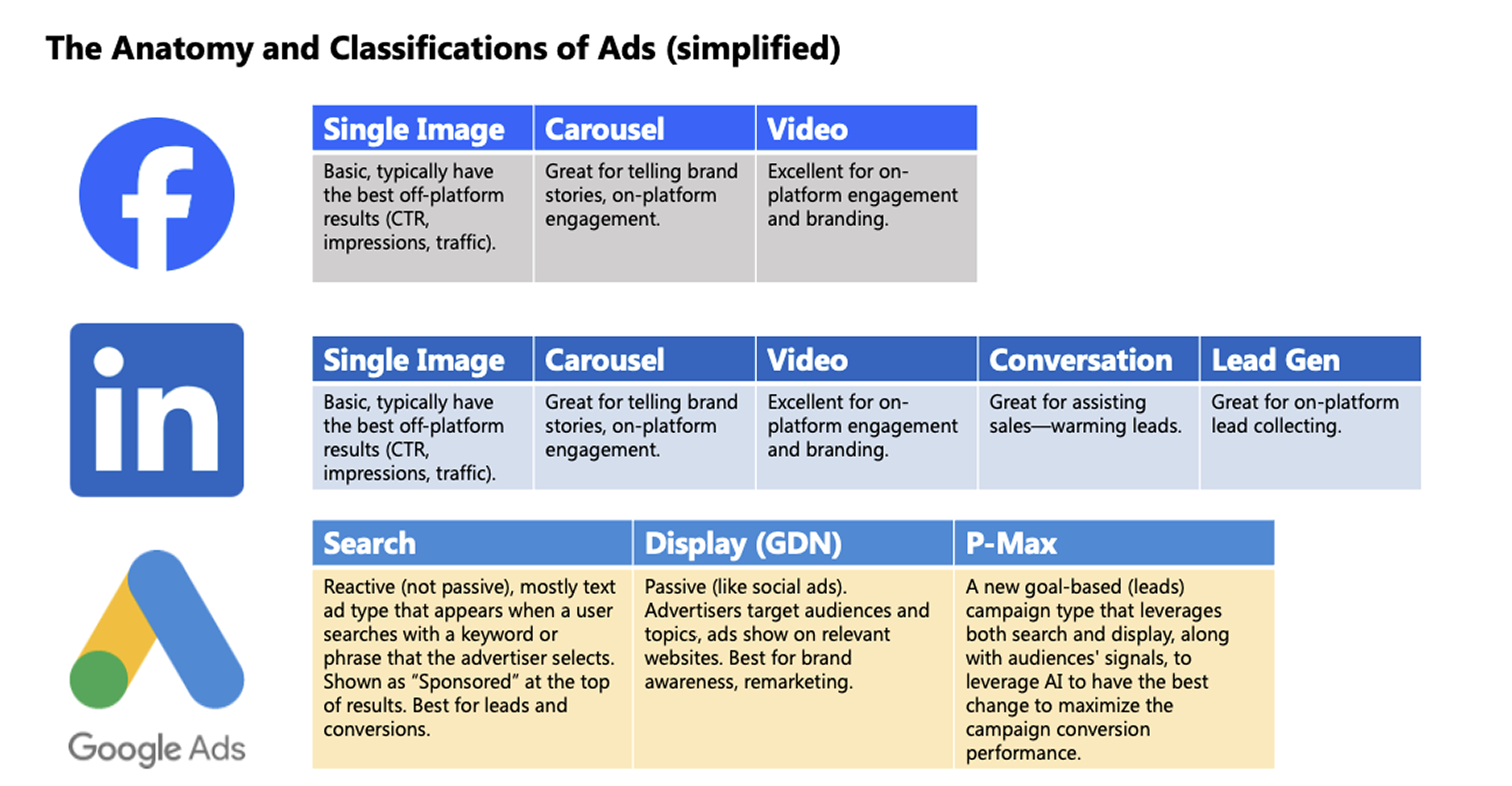MarTech Moment: Anatomy of an Ad
The (simplified) Anatomy and Digital Ad Types
So, you’re looking to promote your product or services, and you’ve determined that digital advertising is the way to go. With your goals, budget, and timing in place, what's the next step? As an agency whose B2B clients have varying objectives, audiences, and challenges, we find great strength and opportunities in right-sizing our tactics to our clients’ strategies. Digital advertising—with its multitude of platform options, scalable budgets and real-time data reporting—is one tool that allows us to do just that.
Navigating the competitive and confusing landscape of digital marketing can be challenging for even the savviest marketers—but it doesn't have to be. Facebook, LinkedIn, and Google are the top three B2B campaign platforms, offering impressions and audience targeting to help achieve your goals. The next question is determining which ads to use and when. Let's begin with Facebook.
Facebook offers various ad types, the most common being Single Image, Carousel and Video ads. Single-image ads excel in off-platform engagement (meaning that once they leave Facebook, the audience will engage with your landing page) but have limitations such as minimal information, lack of interactivity, and the risk of being overlooked if the content isn't compelling. Carousel ads, utilizing similar components as single-image ads, offer multiple slides of information, making them ideal for brand storytelling and on-platform engagement. Video ads, resembling single-image structure but with video content, enhance on-platform engagement (meaning people won’t leave Facebook but will engage with the content). Every platform has a structure it uses to “build” your ads, and understanding the anatomy of this structure is helpful to understand what your assembled ad will look to your audience. For Facebook, these fields include primary text (your main copy); your image(s) or video; the headline (which counterintuitively goes at the bottom); the description, which is pulled from your landing page metadata; and the call-to-action button, which is selected from a list of standardized choices.

LinkedIn offers similar single-image, carousel and video ads but also offers lead-generating and engaging ads that are very B2B-friendly. One very effective option LinkedIn offers that other platforms don’t is Lead Gen Form ads, which work particularly well when you have an offer of gated content. These single image-style ads allow users to easily share their pre-filled personal information in just a couple of clicks, providing less friction and faster access for them to receive your content.
The anatomy of a LinkedIn ad is similar to that of a Facebook ad. Note that introductory text is truncated after 150 characters, so we always work to make sure the most compelling, action-oriented content is right up front in the copy.

Google’s primary advertising tool, especially effective in most applications, is its original product: paid Search text ads. Unlike Facebook or LinkedIn ads, which proactively appear in user feeds based on your targeting selections, these ads respond to user queries, delivering sponsored content targeted through keyword phrases, geofencing, and time parameters. Performance Max ads, also known as P-Max Ads, represent a newer tool that streamlines access to Google ads inventory across channels like YouTube, Display, Search, Discover, Gmail and Maps. It complements keyword-based Search campaigns, utilizing Smart Bidding and Google AI to optimize real-time performance based on specified conversion goals.
One thing that makes Google ads a bit unique is that the Google algorithm constructs your ads for you based on a variety of headlines, descriptions and other information that you provide. Google offers more types of information in its ads (extensions), so having a partner to strategically help you make the most of all these options can be helpful.

Here is a handy guide to the different ad types and which ones you might select, depending on your campaign goals.

In addition to these, there are, of course, other platforms—far too many to mention here. However, these are some of the most popular options that have worked best for our clients. In every case, we start by evaluating client needs and recommending the best solution to achieve the goals.
To learn more about how we can help make your next digital advertising campaign a success, Contact Us.

